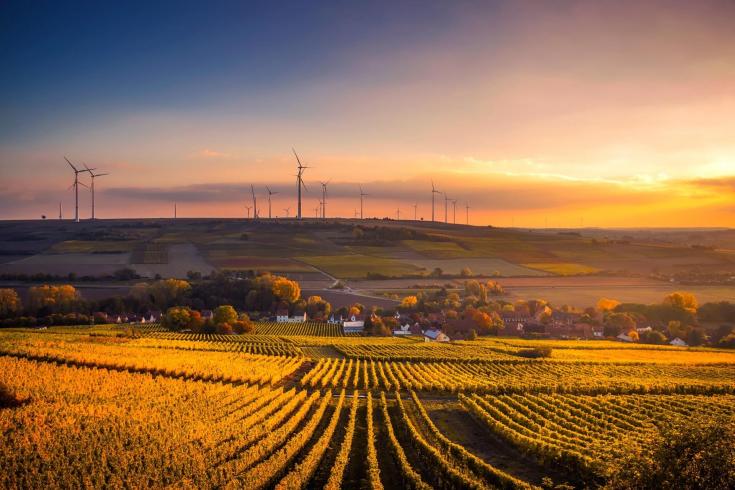Yes in my back yard!

Acceptance of renewable technologies has increased dramatically in recent years, especially as technologies have matured, costs have come down, and acceptance of climate change has increased. Yet, renewable installations – particularly large scale installation such as wind or solar farms and hydropower plants – often face resistance from local communities.
Whilst acceptance of technologies improves, this general approval does not automatically filter down to the community level, where the specificities of a project, and its direct impacts, become clear. Social acceptance can be considered along three main axis;
- Market acceptance – How markets adopt and support new energy technologies, with backing from investors and businesses;
- Socio-political acceptance – Political support and broad positive views amongst the public;
- Community acceptance – The specific attitudes to an individual project from citizens, local stakeholders and public authorities.
Whilst the first two are broadly present for renewables, specific consideration must be given in every case for community acceptance. Typical reasons for resistance include visual impact, supposed noise concerns, and environmental impacts (flooding for hydropower dams and wind turbine effects on birds and bats, are often given as examples).
However, the main cause of resistance is typically that communities feel that installations are imposed on them with little prior consultation, wherein they suffer from disturbance during installation and operation, with no concrete benefits for the community. Political and social power can therefore be taken as a major concern, and it is vital that in every case, consideration is given to the unique circumstances of each community and environment.
Several Interreg Europe projects have explored the issue of social acceptance for renewable energies and have identified good practices that can provide inspiration for planning and operating renewable energy installations that can gain public support.
Education and awareness raising
Whilst opinions of renewable energy are improving, many people still only have a scant knowledge of how they operate and how efficient and cost-effective they can be. A starting point for increasing acceptance can involve education and awareness raising through visits to existing renewable energy installations.
One such example is in Normandy, which participates in the Global Wind Day, organising events at wind farms whereby individuals can visit facilities and conferences to learn about wind energy and discuss the real impact of a local wind farm with wind farm owners as well as local residents. The initiative enables 100-200 people to visit each participating wind farm and enhance their knowledge, becoming more likely to be accepting of wind farms.
Engaging the community in planning and decision-making
After general awareness raising and education, citizens and communities can be involved in discussions related to the establishment of new installations.
Samsø Energy Academy, on Samsø Island, Denmark, has used ‘The Circle Way’ methodology to create a dialogue with its local communities on energy issues. Each participant in the discussion sits in the circle and each voice is equal. The Energy Agency has held over 5,000 circle meetings, workshops and conferences, moving from structured discussions to participatory meetings and processes for collective decision-making.
Joint participation in discussions enables all to understand the benefits of an installation and ensure that everyone feels heard, helping to overcome inequity of power. This approach has been vital for Samsø Renewable Energy Island project, in which the island became energy self-sufficient in 2007 based on wind, solar and bioenergy, and aims to make itself completely independent of fossil fuels by 2030 (including transport).
Returning to Normandy, a joint development system for wind farms was established between SIEGE27 (a group of investors), two public-private partnerships, municipalities, and Wind Energies (a wind energy developer). The set-up enabled local authorities to take ownership of the energy source and for municipalities to financially benefit from the wind farms via the payments of dividends. Individual citizens were able to purchase bonds via a crowdsourcing platform. Approaches such as this one can help significantly to overcome this issue by giving local authorities and citizens a voice and a financial stake in the success of the project.
Joint ownership and management of renewable installations
Going further than the joint development systems, community acceptance can be best supported via the co-ownership and co-management of renewables in a community structure.
In Templederry, Ireland, a Community Wind Farm has been developed by local citizens who have 100% ownership of the wind farm. The farm can power around 3,500 homes, being comprised of two 2.3MW turbines. The project relied on a mixture of national and European grants, tax relief and guarantees to leverage private and community finance.
Specifically, this involved a 1,000 EUR investment from 29 local inhabitants, LEADER funding of 200,000 EUR, 1.2 million EUR of equity funding under Ireland’s Employment and Investment Incentive Scheme and 4.8 million EUR from De Lage Landen bank, with technical and financial advice from Tipperary Energy Agency. The farm is owned by the initial 29 investors who will benefit from profits made after loans are repaid, with shares also held by a community co-operative to benefit the rest of the community.
For more information on community approaches
- Policy Learning Platform Policy Brief on
.Document
- The practices in this article came from the Islands of Innovation, APPROVE and FIRESPOL projects. Discover more at the project websites.
